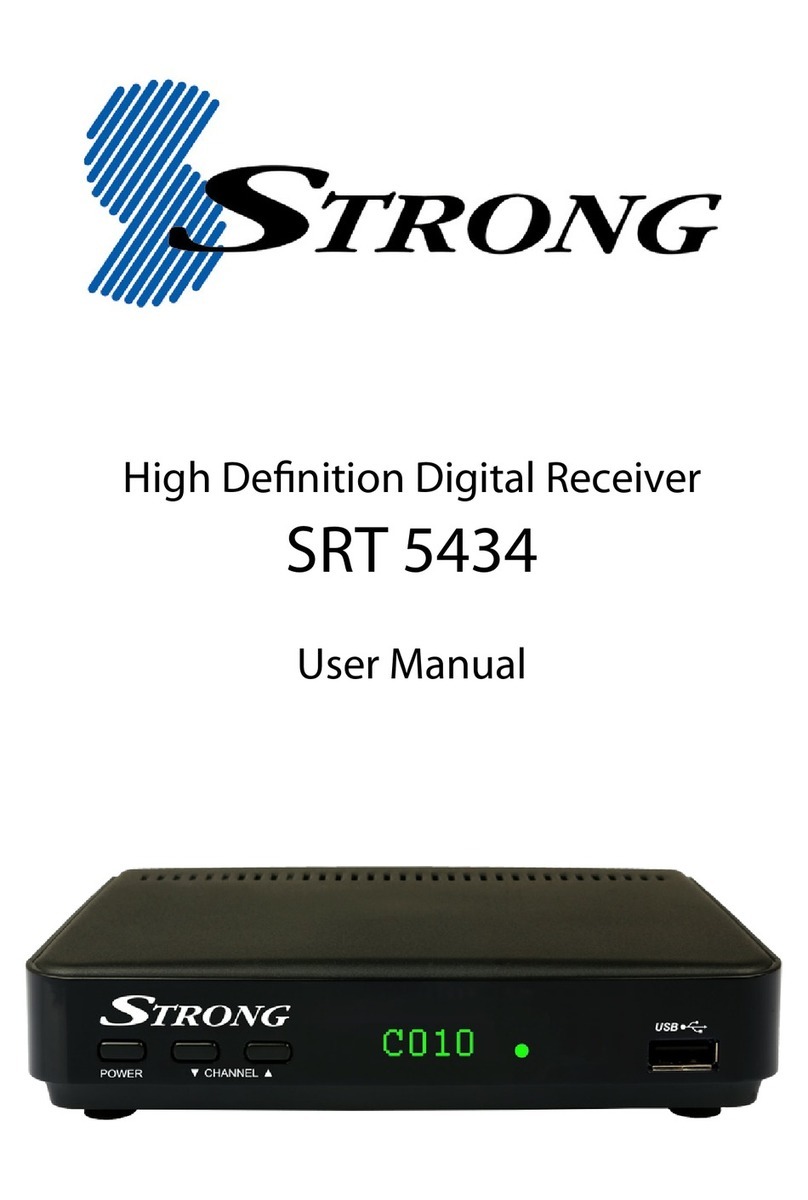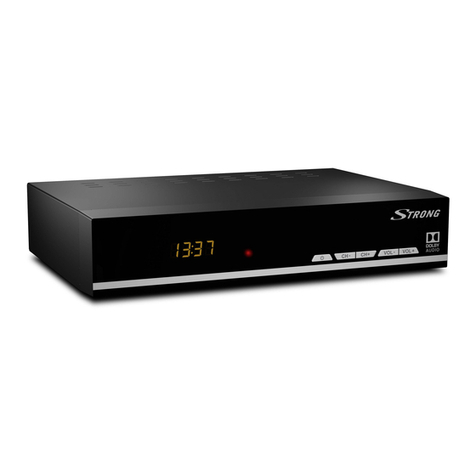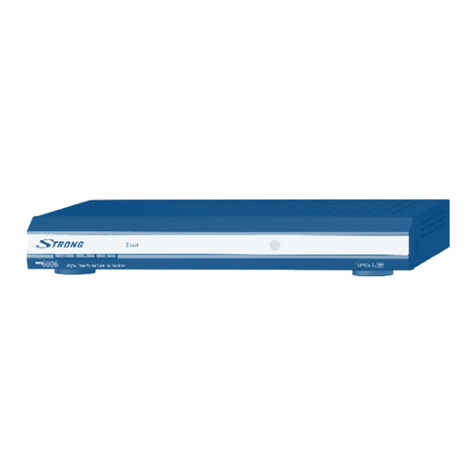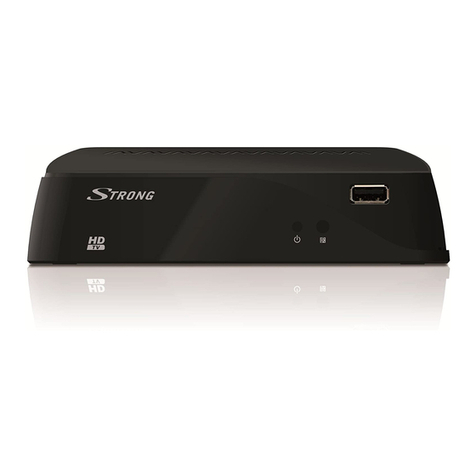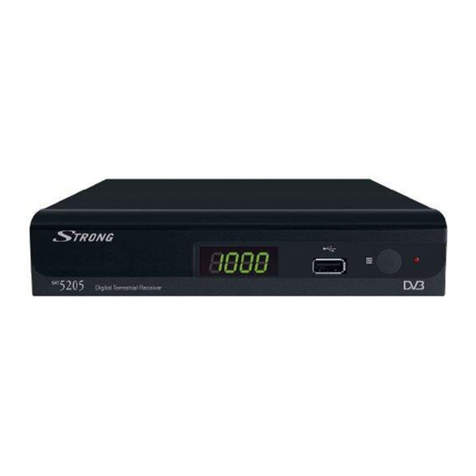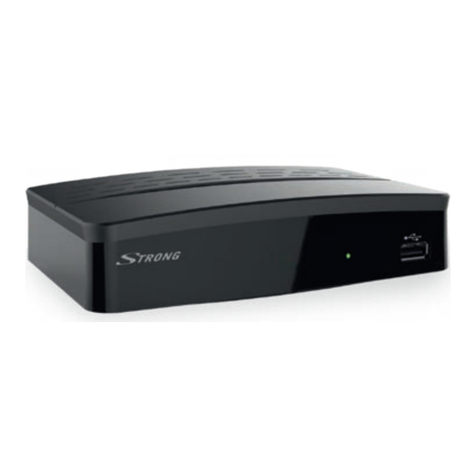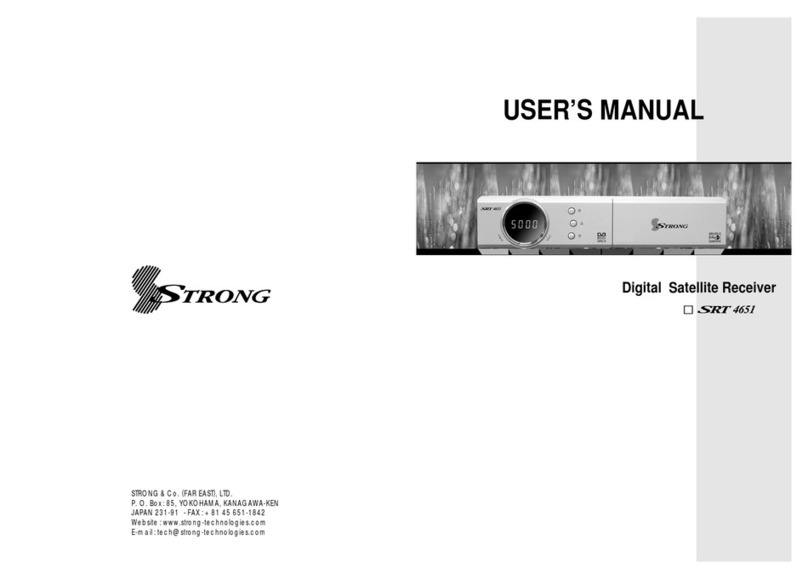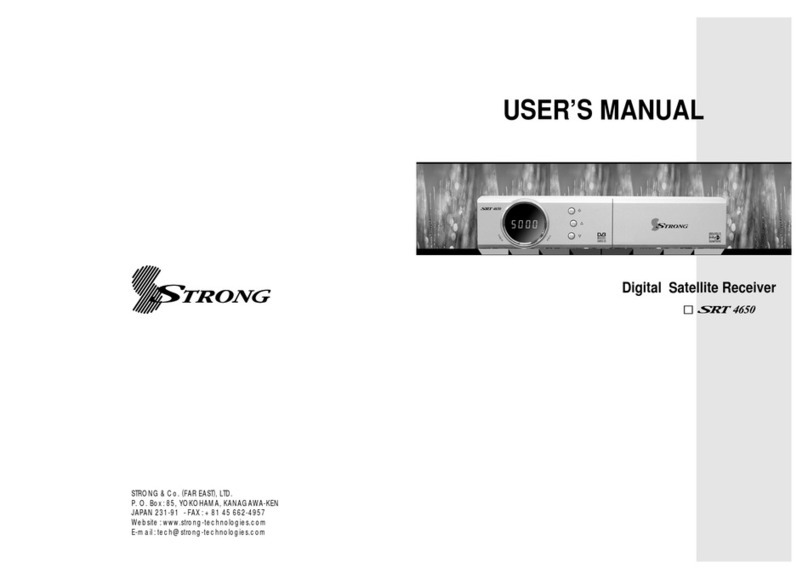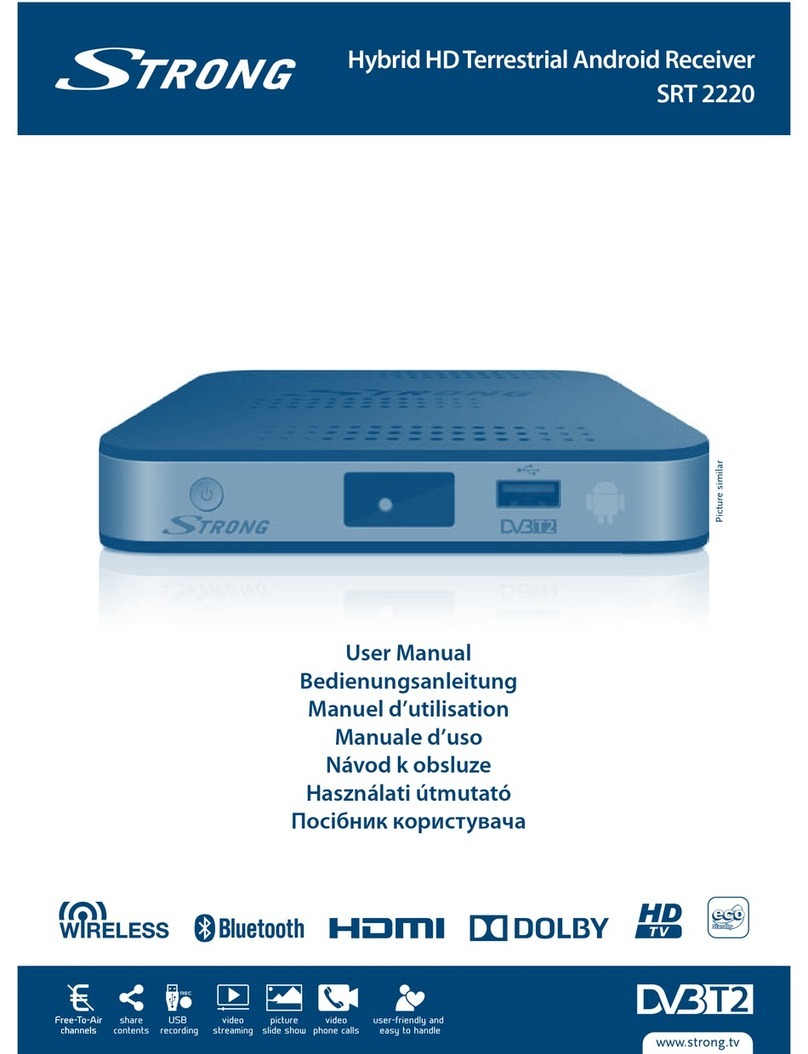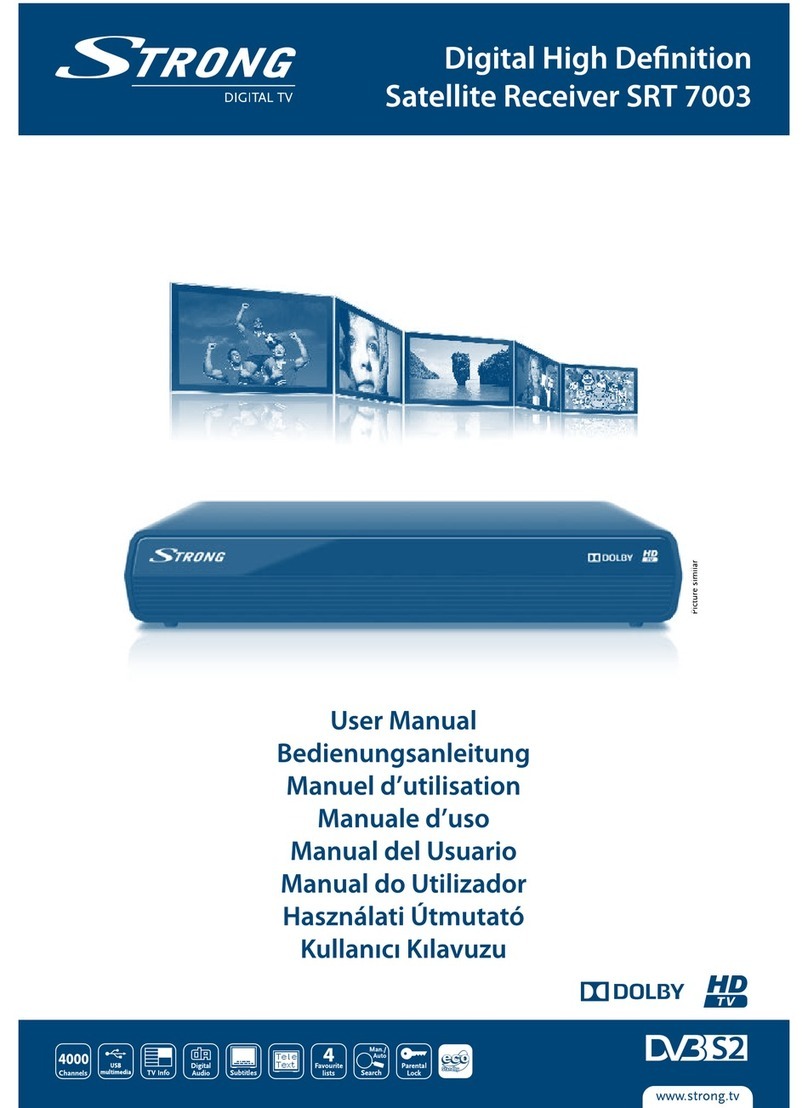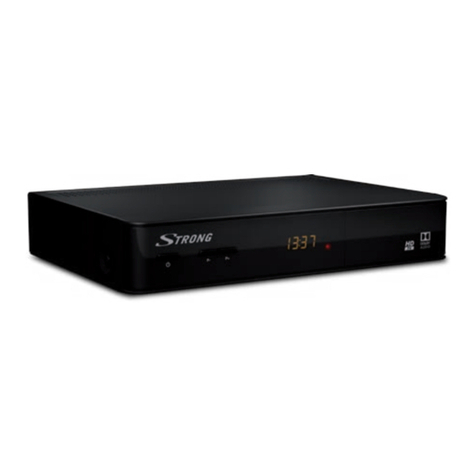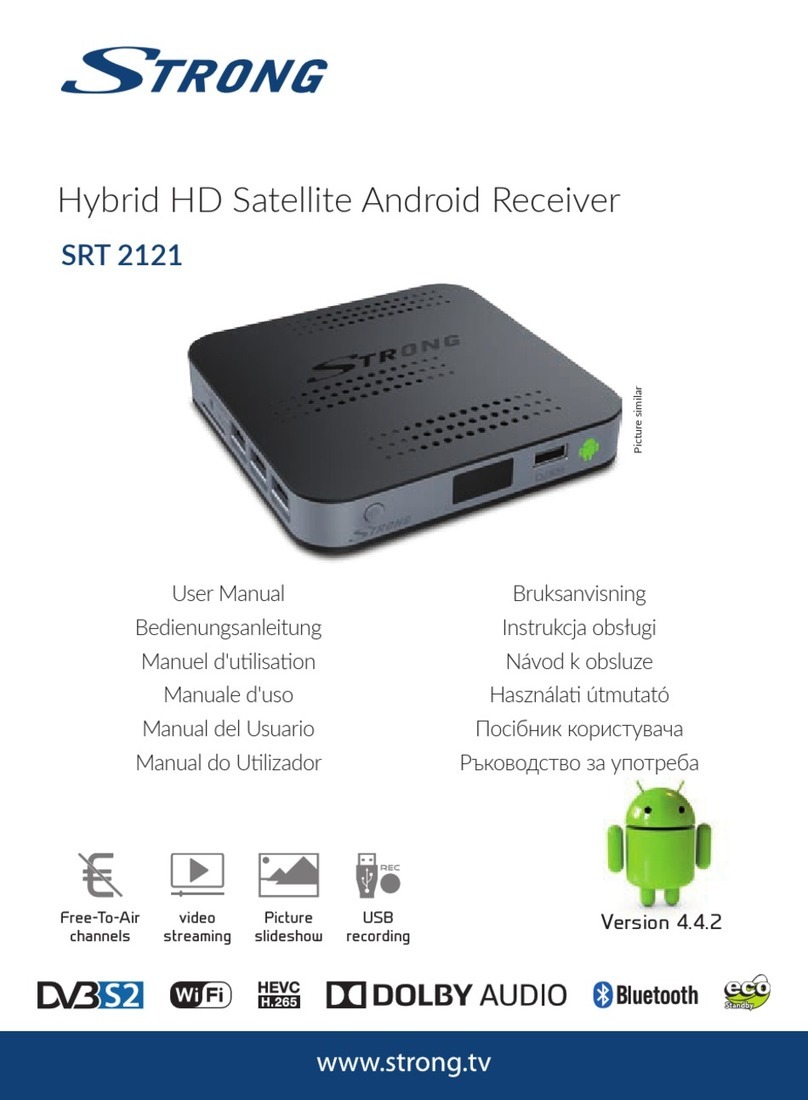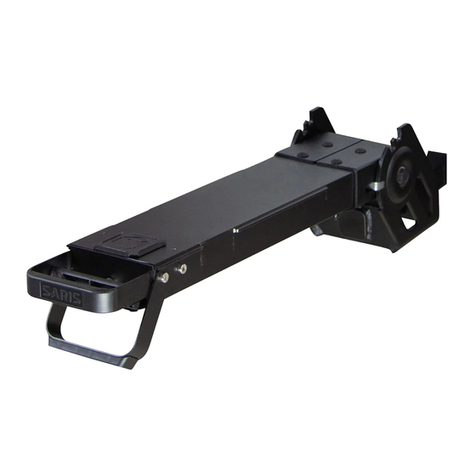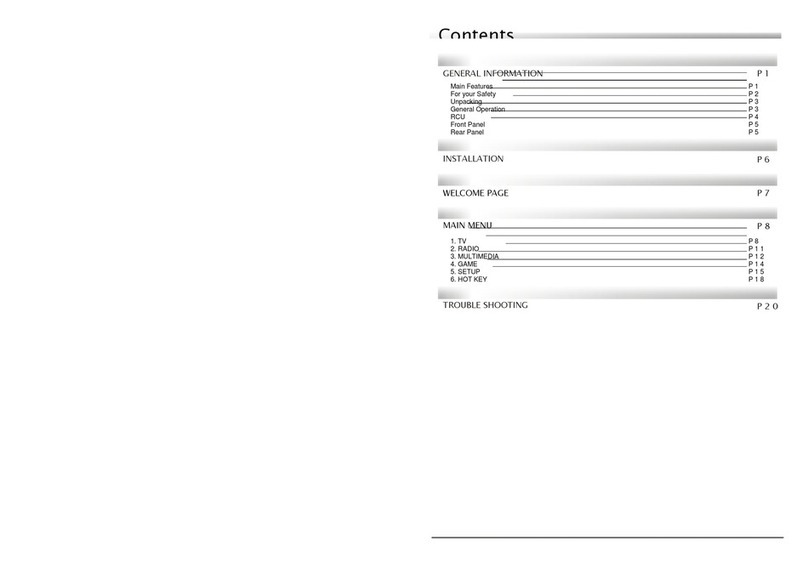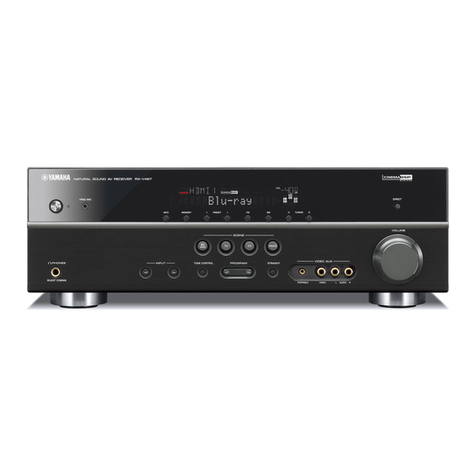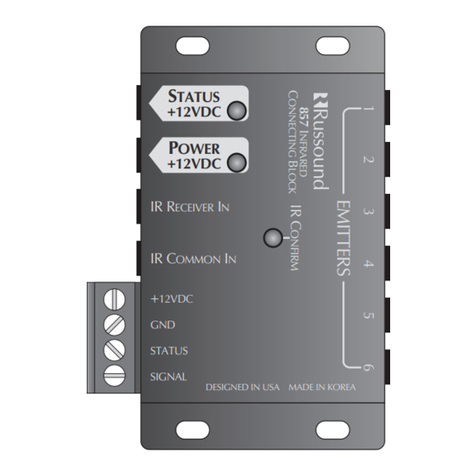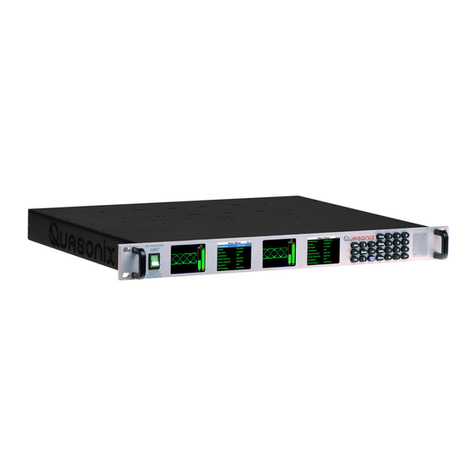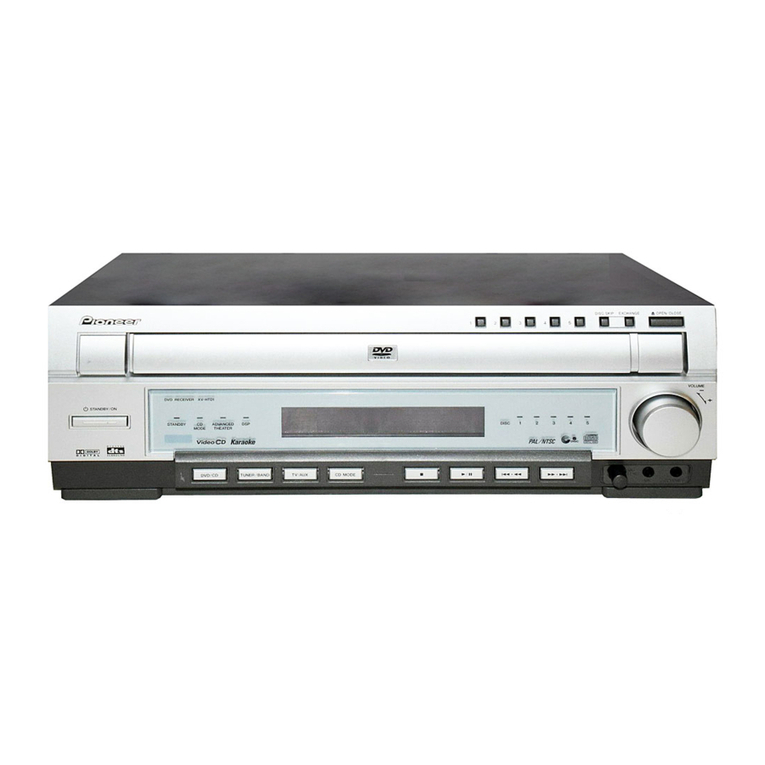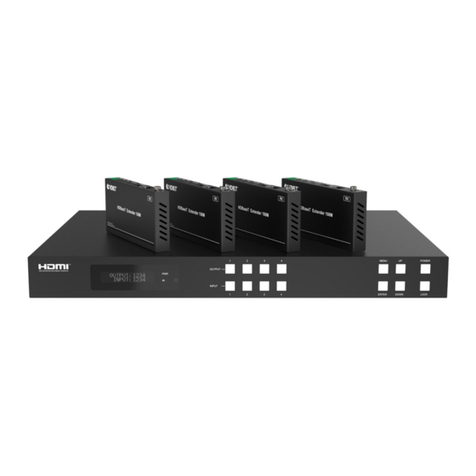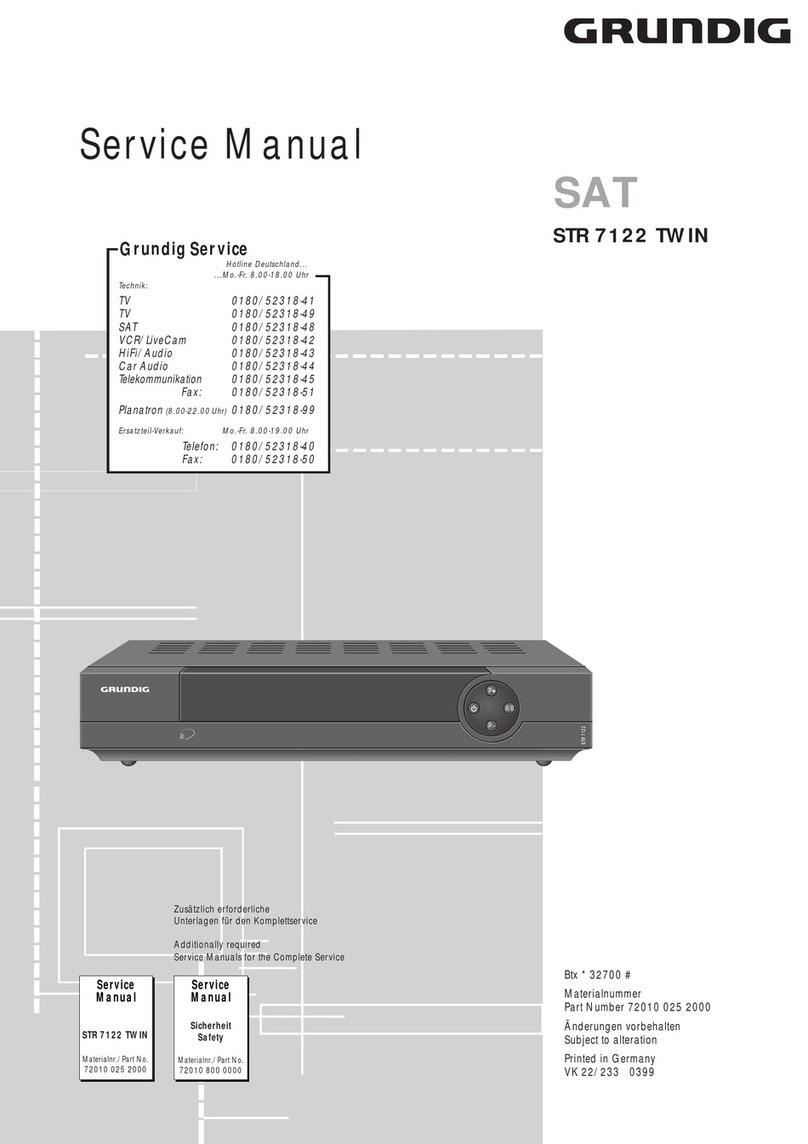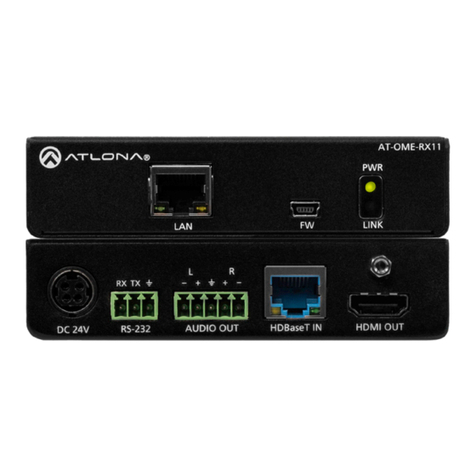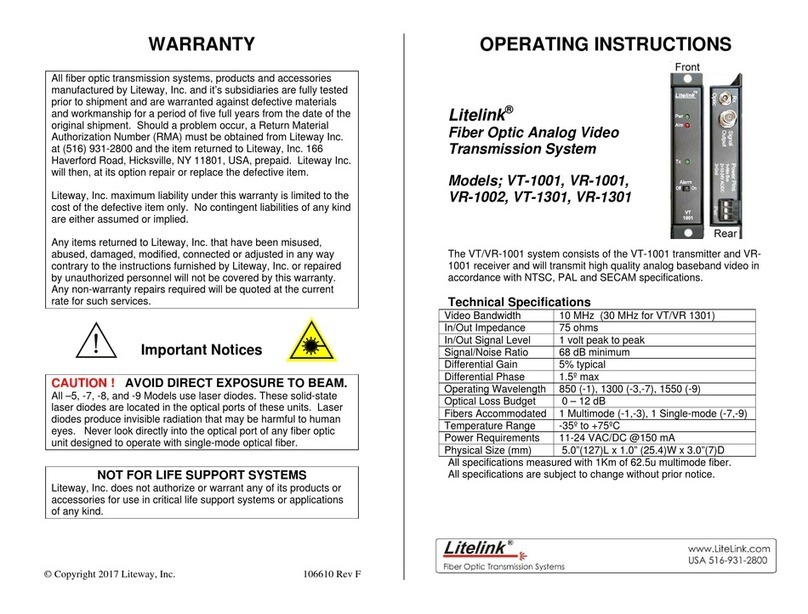8 9
4.3 Remote controller 4.3 Remote controller
POWER :To turn the receiver On/Off.
MUTE :To turn the sound On/Off.
Numeric Keys (0-9) : To enter numerical
settings (such as channel numbers)
directly.
INFO : To show information about the
current program. Press twice to show
detail.
PAUSE : To pause the video. Press
again to resume the video.
EPG : To show the TV/Radio program
guide.
GROUP :To change the channel
groups(Satellites or favorite groups).
MENU :To enter or exit the main menu.
EXIT :To exit from the present menu and
move to the previous menu.
-Double arrow UP/DOWN(ASPECT) :
To move to the next or pervious page
when many pages are available and to
select a TV aspect ratio with Pan Scan,
Letter-Box(4:3), Full Screen or Pillar-
Box(16:9) in live mode.
-Up & Down : To switch channels in
non-menu mode and move the cursor
up/down in menu mode.
-Left & Right : To change the
volume level in non-menu mode and
modify a setting in menu mode.
OK :To show the Channel List in non-
menu mode and select an item or confirm
in menu mode.
TV/RADIO :To switch between TV and
Radio.
TV/SAT :To switch the TV output source
between the satellite input and the
UHF/VHF antenna input.
18
17
16
1514
1312
1110
9
8
7
6
5
4
3
2
1
12
4
9
15
5
10
11
3
6
8
RECALL(RED):To move to the previous
channel. Used for special functions in
menu mode.
AUDIO(GREEN):To show the Multi-
language audio track, the stereo-mono
mode. Used for special functions in menu
mode.
TEXT(YELLOW):To show the teletext
contents if teletext is transmitted. Used
for special functions in menu mode.
BLUE :To display multiple pictures.
COLOR :To control the brightness,
contrast and color of a picture.
ZOOM :To zoom in the screen picture.
Press the ZOOM button and select a
screen section, then press the OK button.
(You can zoom in by 3 times)
RWD : Playback in rewind mode.
ADVANCE : Go to live channel.
FWD : Playback in forward mode.
REC : Start recording.
PLAY : Play Content.
STOP : Stop Playback.
FILELIST : To display the filelist.
BOOKMARK : To mark a specific place
in a file for later retrieval.
SLEEP : To set the STB off after minutes.
33
32
31
30
29
28
27
26
25
24
23
22
21
20
19
17
12
14
16
7
18
13
21
24
19
23
20
25
28
29
31
22
27
26
30
33
32
